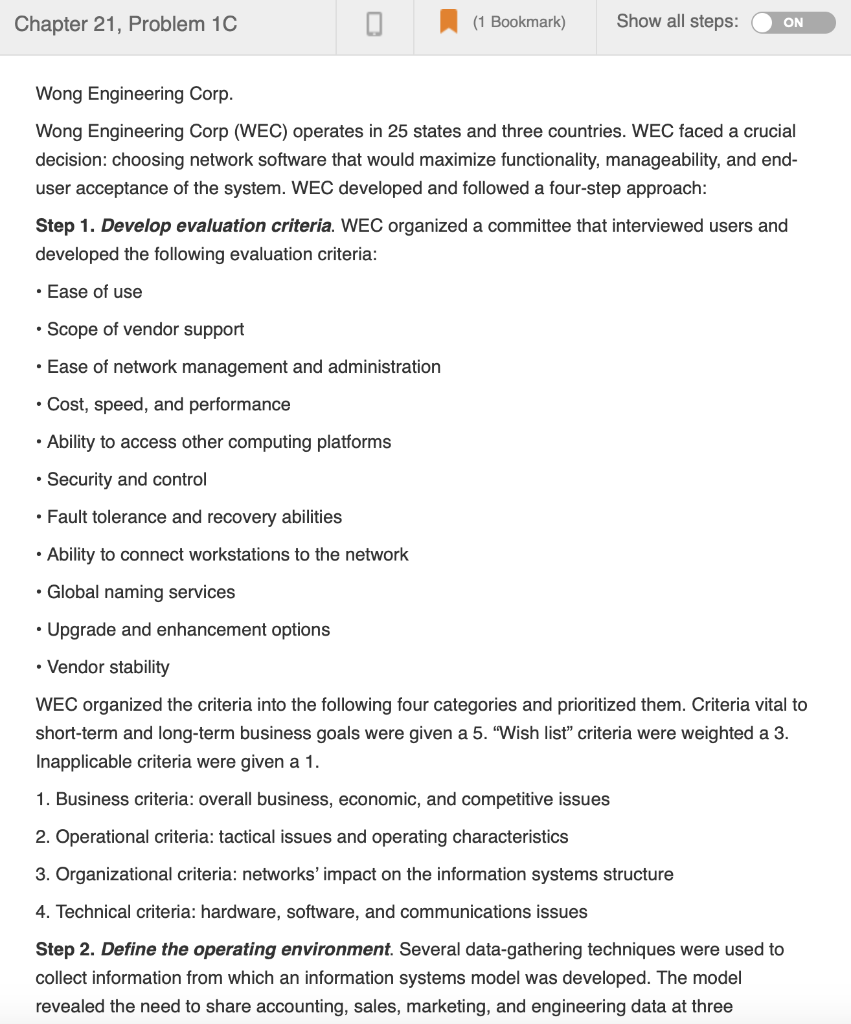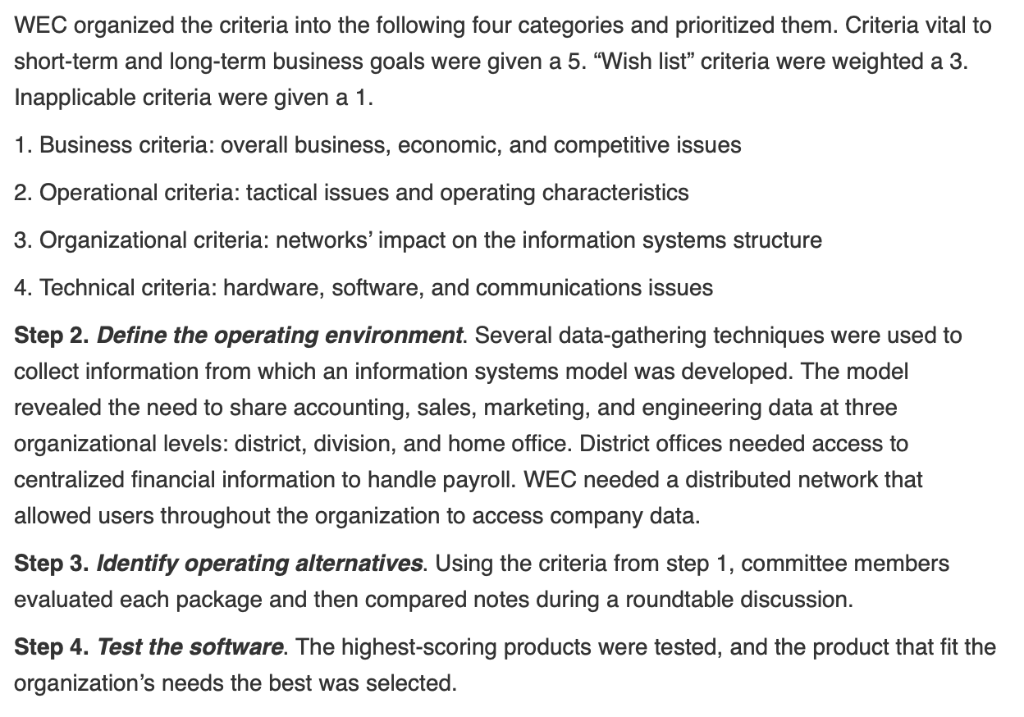Hello, would you please be able to answer the following questions so that I may compare them to my answers for Chapter 21, problem 1C in Accounting Information Systems (14th edition)


-
What role did the committee play in the selection process?
-
Discuss how WEC should select committee members?
-
What are the advantages of using a committee to make the decision?
-
What are the disadvantages of using a committee to make the decision?
-
Describe data gathering methods WEC could use to assess the needs of users.
-
Describe data gathering methods WEC could use to choose vendors.
-
Discuss the pros of analyzing the operating environment.
-
What data gathering methods can an organization use to understand the operating
environment?
-
How can the committee resolve scoring differences when choosing a system using the
point-scoring technique? Describe at least two techniques.
-
Should purchase selections be determined on the point scoring technique alone? Why or
why not?
-
Describe additional procedure(s) the committee should use when making the final choice.
Chapter 21, Problem 1C Bookmark) Show all steps: ON Wong Engineering Corp Wong Engineering Corp (WEC) operates in 25 states and three countries. WEC faced a crucial decision: choosing network software that would maximize functionality, manageability, and end- user acceptance of the system. WEC developed and followed a four-step approach Step 1. Develop evaluation criteria. WEC organized a committee that interviewed users and developed the following evaluation criteria Ease of use Scope of vendor support Ease of network management and administration Cost, speed, and performance Ability to access other computing platforms Security and control Fault tolerance and recovery abilities Ability to connect workstations to the network Global naming services Upgrade and enhancement options Vendor stability WEC organized the criteria into the following four categories and prioritized them. Criteria vital to short-term and long-term business goals were given a 5"Wish list" criteria were weighted a 3. Inapplicable criteria were given a 1. 1. Business criteria: overall business, economic, and competitive issues 2. Operational criteria: tactical issues and operating characteristics 3. Organizational criteria: networks' impact on the information systems structure 4. Technical criteria: hardware, software, and communications issues Step 2. Define the operating environment. Several data-gathering techniques were used to collect information from which an information systems model was developed. The model revealed the need to share accounting, sales, marketing, and engineering data at three Chapter 21, Problem 1C Bookmark) Show all steps: ON Wong Engineering Corp Wong Engineering Corp (WEC) operates in 25 states and three countries. WEC faced a crucial decision: choosing network software that would maximize functionality, manageability, and end- user acceptance of the system. WEC developed and followed a four-step approach Step 1. Develop evaluation criteria. WEC organized a committee that interviewed users and developed the following evaluation criteria Ease of use Scope of vendor support Ease of network management and administration Cost, speed, and performance Ability to access other computing platforms Security and control Fault tolerance and recovery abilities Ability to connect workstations to the network Global naming services Upgrade and enhancement options Vendor stability WEC organized the criteria into the following four categories and prioritized them. Criteria vital to short-term and long-term business goals were given a 5"Wish list" criteria were weighted a 3. Inapplicable criteria were given a 1. 1. Business criteria: overall business, economic, and competitive issues 2. Operational criteria: tactical issues and operating characteristics 3. Organizational criteria: networks' impact on the information systems structure 4. Technical criteria: hardware, software, and communications issues Step 2. Define the operating environment. Several data-gathering techniques were used to collect information from which an information systems model was developed. The model revealed the need to share accounting, sales, marketing, and engineering data at three








